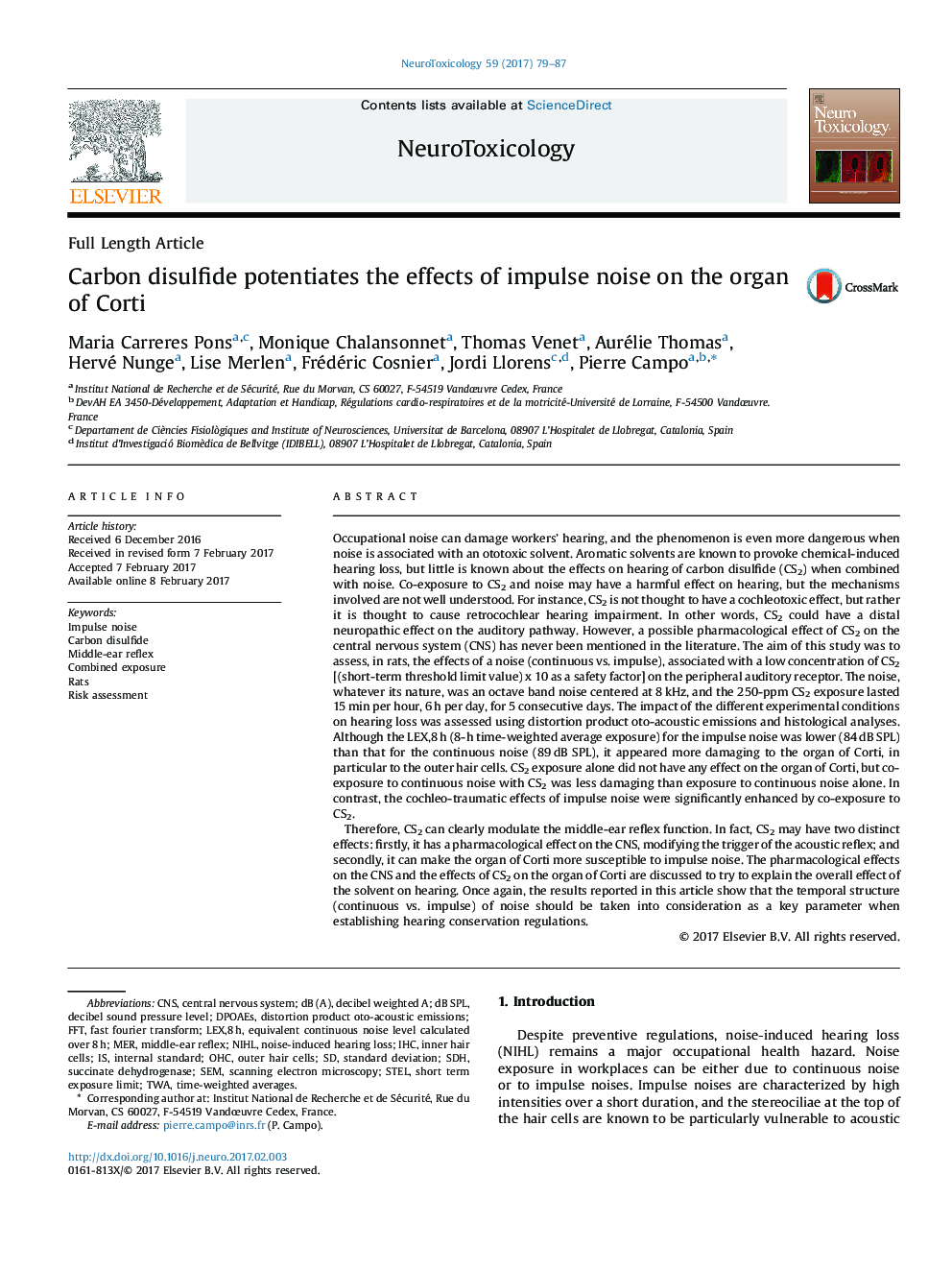| کد مقاله | کد نشریه | سال انتشار | مقاله انگلیسی | نسخه تمام متن |
|---|---|---|---|---|
| 5560944 | 1562035 | 2017 | 9 صفحه PDF | دانلود رایگان |

- Carbon disulfide exposure has raised concerns for hearing in low-frequency regions.
- Despite similar energy, impulse and continuous noises do not have the same traumatic impact on cochlea.
- Carbon disulfide potentiates the effects of impulse noise.
- Exposure to moderate carbon disulfide concentrations reduced the auditory damage caused by continuous noise.
Occupational noise can damage workers' hearing, and the phenomenon is even more dangerous when noise is associated with an ototoxic solvent. Aromatic solvents are known to provoke chemical-induced hearing loss, but little is known about the effects on hearing of carbon disulfide (CS2) when combined with noise. Co-exposure to CS2 and noise may have a harmful effect on hearing, but the mechanisms involved are not well understood. For instance, CS2 is not thought to have a cochleotoxic effect, but rather it is thought to cause retrocochlear hearing impairment. In other words, CS2 could have a distal neuropathic effect on the auditory pathway. However, a possible pharmacological effect of CS2 on the central nervous system (CNS) has never been mentioned in the literature. The aim of this study was to assess, in rats, the effects of a noise (continuous vs. impulse), associated with a low concentration of CS2 [(short-term threshold limit value) x 10 as a safety factor] on the peripheral auditory receptor. The noise, whatever its nature, was an octave band noise centered at 8Â kHz, and the 250-ppm CS2 exposure lasted 15Â min per hour, 6Â h per day, for 5 consecutive days. The impact of the different experimental conditions on hearing loss was assessed using distortion product oto-acoustic emissions and histological analyses. Although the LEX,8Â h (8-h time-weighted average exposure) for the impulse noise was lower (84Â dB SPL) than that for the continuous noise (89Â dB SPL), it appeared more damaging to the organ of Corti, in particular to the outer hair cells. CS2 exposure alone did not have any effect on the organ of Corti, but co-exposure to continuous noise with CS2 was less damaging than exposure to continuous noise alone. In contrast, the cochleo-traumatic effects of impulse noise were significantly enhanced by co-exposure to CS2.Therefore, CS2 can clearly modulate the middle-ear reflex function. In fact, CS2 may have two distinct effects: firstly, it has a pharmacological effect on the CNS, modifying the trigger of the acoustic reflex; and secondly, it can make the organ of Corti more susceptible to impulse noise. The pharmacological effects on the CNS and the effects of CS2 on the organ of Corti are discussed to try to explain the overall effect of the solvent on hearing. Once again, the results reported in this article show that the temporal structure (continuous vs. impulse) of noise should be taken into consideration as a key parameter when establishing hearing conservation regulations.
Journal: NeuroToxicology - Volume 59, March 2017, Pages 79-87